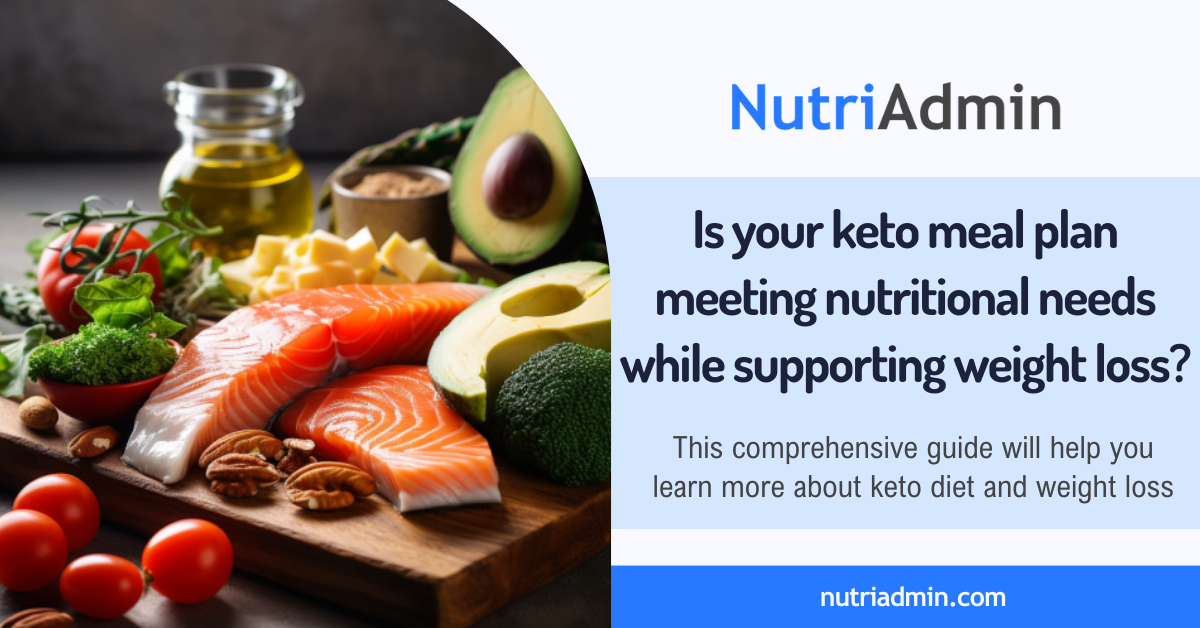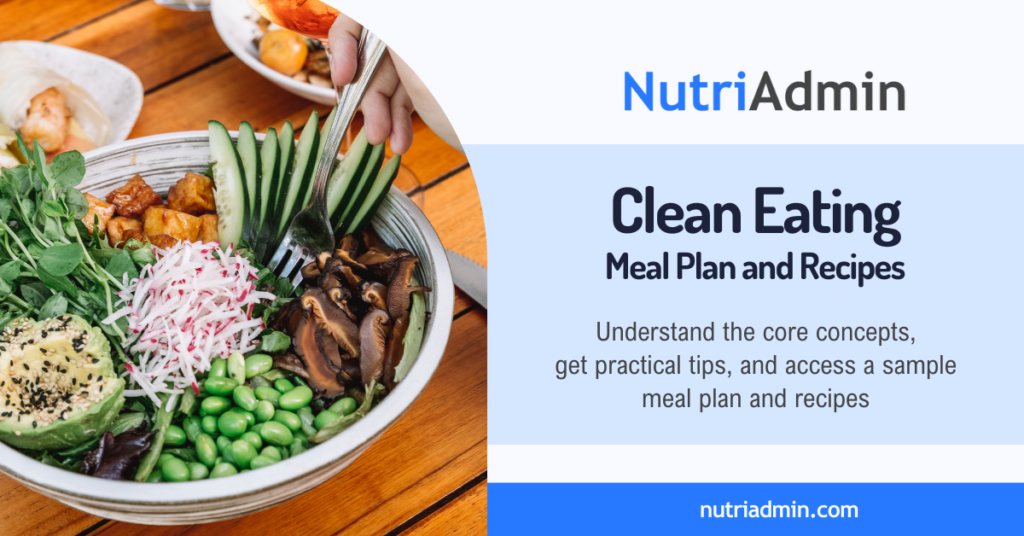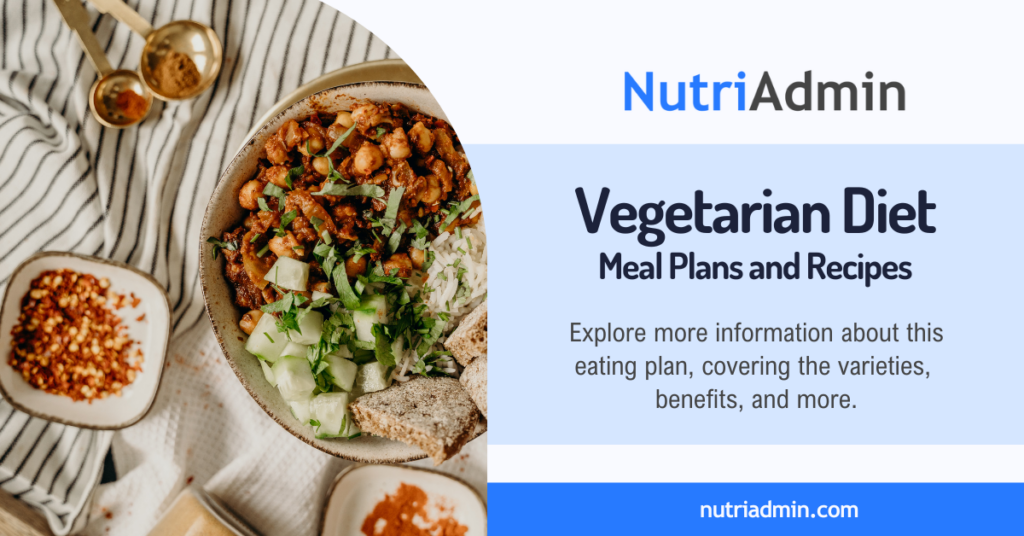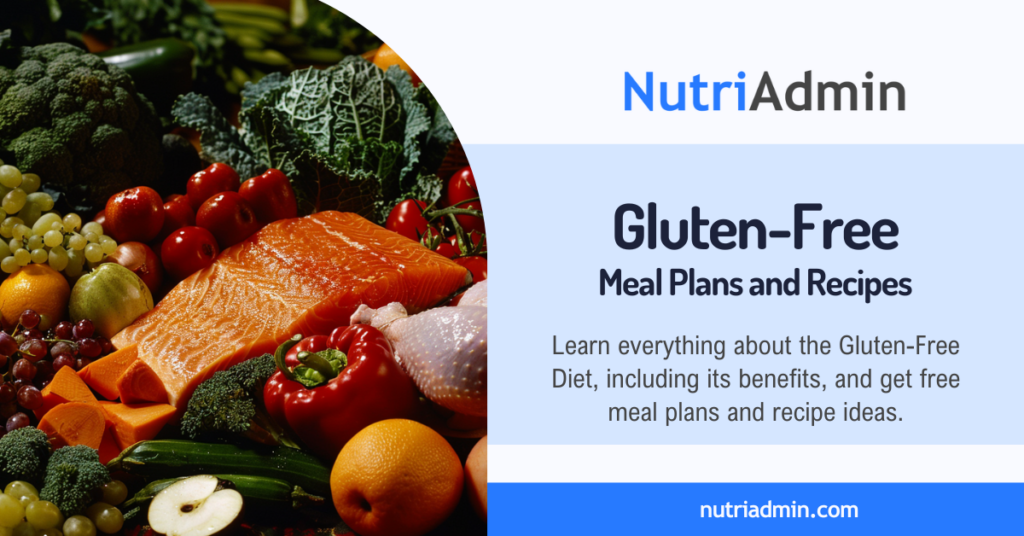Exploring weight loss options often leads individuals to consider different types of diets and plans. Ketogenic diet has become popular in recent years due to its quick weight loss benefit. In this article, we’ll break down the basics of the keto diet as a weight loss plan, and discuss the science behind how it works. We will also talk about the essential macronutrients on keto diet and shed light on potential benefits and side effects.
We’ll also cover practical aspects, such as mistakes to avoid, and low-carb foods that fit well into a keto diet. We also included a sample keto diet meal plan for a clearer understanding of how to implement it while keeping in mind the essential nutrients other than macros. Additionally, we will discuss common keto terminologies, and answer common questions related to ketogenic diet.
- What is keto diet?
- Potential Benefits of Keto Diet
- Potential Side Effects of Keto Diet
- Common Mistakes to Avoid While on Keto Diet Plan for Weight Loss
- What can you eat on a keto diet?
- Sample Keto Meal Plan
- Importance of Seeking Professional Guidance
- Key Terms You Need to Know on Ketogenic Diet While Trying to Lose Weight
- Conclusion
- Frequently Asked Questions
What is keto diet?
The ketogenic diet or most commonly known as keto diet, follows a high-fat, moderate-protein, and low-carbohydrate eating pattern. Many foods that are rich in nutrients like fruits, vegetables, and whole grains serve as a carbohydrate source. However, the keto diet significantly restricts carbs from all origins, aiming to keep daily intake below 50 grams.
This often involves excluding bread, grains, and cereals entirely, while also limiting fruits and vegetables due to their carbohydrate content. Most people on a keto diet need to make big changes in their usual eating habits.
Keto diet through the years
Diets similar to ketogenic diet has been used throughout history to treat health issues. In the 19th century, people commonly used the ketogenic diet to control diabetes. By 1920, researchers introduced it as an effective treatment for epilepsy in children who didn’t respond well to medication. Since then, researchers have tested the diet in controlled settings for conditions like cancer, diabetes, polycystic ovary syndrome, and Alzheimer’s disease.
However, keto diet is now gaining attention as a potential weight loss plan, influenced by the low-carb diet trend, Atkins diet, that began in the 1970s. Other low-carb diets like Paleo, South Beach, and Dukan are high in protein but moderate in fat.
Macros for Keto Diet
The ketogenic diet mainly involves consuming a high amount of fat, a moderate amount of protein, and a low amount of carbohydrates. The distribution of macronutrients typically falls within the range of about 55% to 60% fat, 30% to 35% protein, and 5% to 10% carbohydrates.
The ketogenic diet commonly decreases the daily intake of total carbohydrates to below 50 grams, sometimes reaching as low as 20 grams. For context, a cup of cooked medium-grain brown rice contains 45.8 grams which means, on a keto diet, you need to consume around that amount of carbs or less.
Science behind how keto diet plan works for weight loss
The body usually relies on carbohydrates as its primary energy source. However, when you are on a ketogenic diet where your daily carbohydrate intake drops below 50 grams, insulin secretion decreases significantly, putting the body into a catabolic state. This leads to the depletion of glycogen stores and triggers two key metabolic processes: gluconeogenesis and ketogenesis.
Gluconeogenesis is the body’s internal production of glucose, mainly in the liver, using substrates like pyruvate, lactic acid, glycerol, and specific amino acids. When glucose availability decreases, the metabolic pathway shifts to ketogenesis, producing ketone bodies as an alternative energy source. Ketone bodies replace glucose for energy.
During ketogenesis, low insulin levels lead to reduced fat and glucose storage stimulation. Increased fat breakdown into fatty acids, which the body then metabolizes into ketone bodies—acetoacetate, beta-hydroxybutyrate, and acetone—occurs due to hormonal changes. These ketones accumulate, creating “nutritional ketosis,” considered generally safe as long as carb deprivation continues.
Nutritional ketosis differs from ketoacidosis, a severe condition with excessively high ketone levels, causing blood acidosis. Ketone bodies, synthesized internally, serve as an energy source for vital organs like the heart, muscles, and kidneys. They can also cross the blood-brain barrier, providing an alternative energy source for the brain. Conversely, red blood cells and the liver do not use ketones.
Factors like basal metabolic rate, body mass index, and body fat percentage influence ketone body production. Ketones, often called a “super fuel,” generate more ATP than glucose. For instance, acetoacetate produces 9,400 grams of ATP, beta-hydroxybutyrate yields 10,500 grams, while glucose produces 8,700 grams. Ketone bodies support efficient fuel production in calorie deficits and reduce free radical damage while boosting antioxidant capacity.
How do these processes help in weight loss?
Keto diet plan aids in weight loss because on very low consumption of carbohydrates, insulin levels stay steady, reducing fluctuations and curbing hunger. On the other hand, a high carb diet causes rapid fluctuations in insulin levels, leading to increased hunger. Also, fats and proteins take longer to digest, keep you feeling full for an extended period.
Potential Benefits of Keto Diet
In a narrative review from 2021, experts looked at the ketogenic diet and its potential benefits for health. They found that a keto diet could enhance beneficial gut bacteria and positively impact specific molecules in the body.

This diet could be helpful for people with diabetes by reducing their HbA1c levels and lessening the need for insulin. It might also support weight loss by targeting belly fat and controlling appetite.
Additionally, the keto diet could improve cholesterol levels by lowering “bad” cholesterol, increasing “good” cholesterol, and reducing triglycerides. The keto diet may boost the effectiveness of cancer treatments, making cancer cells more sensitive to chemotherapy and radiation.
In conclusion, a ketogenic diet plan shows short-term metabolic benefits. It promotes weight loss and improves health indicators associated with excess weight, addressing concerns like insulin resistance, high blood pressure, and elevated cholesterol and triglycerides. Proposed mechanisms include a satiating effect, reduced appetite-stimulating hormones, a direct role of ketone bodies in curbing hunger, and increased calorie expenditure. Ongoing research is crucial to fully understand the diet’s mechanisms and long-term effects.
Despite promising results and potential, ongoing research is essential to solidify our understanding of the diet’s mechanisms and long-term effects.
Potential Side Effects of Keto Diet
Eliminating a crucial macronutrient like carbohydrates from the Ketogenic Diet can lead to various potential side effects.

In the short term, individuals may experience symptoms collectively known as the “keto flu,” including fatigue, irritability, headache, nausea, dehydration, hypoglycemia, diarrhea, and reduced exercise tolerance. These are often transient and can be managed with proper hydration and electrolyte intake.
Prolonged adherence to the keto diet may lead to more persistent issues. These can include hepatic steatosis (accumulation of fat in the liver), hypoproteinemia (low levels of proteins in the blood), hypocitraturia (low citrate levels in the urine), hypercalciuria (excess calcium in the urine), nephrolithiasis (kidney stones), and deficiencies in essential vitamins and minerals.
Common Negative Effects of Keto Diet
- Nutrient Deficiencies: The restrictive nature of keto diet, particularly in terms of carbohydrates, can result in inadequate intake of essential vitamins, minerals, and phytochemicals. This could potentially lead to nutrient deficiencies, impacting overall health.
- Digestive Issues: The high-fat, low-fiber nature of the diet might cause digestive problems such as constipation, diarrhea, and bloating.
- Kidney Stones: The risk of developing kidney stones may increase on a high-fat, low-carbohydrate diet. Also, keto diets with higher protein levels might accelerate kidney failure in individuals with kidney disease.
- Heart Disease Risk: A recent study discovered that individuals who regularly consumed a self-reported diet low in carbohydrates and high in fat experienced elevated levels of LDL cholesterol, known as “bad” cholesterol, and faced a higher risk of heart disease.
- Neural Tube Defects: In planned pregnancies, those who followed a keto diet in the year before conception had a 30% higher likelihood of having a child with a neural tube defect, such as anencephaly or spina bifida. For unplanned pregnancies, where 40% of cases are affected, there is an 89% increased risk of neural tube defects if a carbohydrate-restricted diet was followed in the preceding year. This is likely due to reduced folate intake, as many carbohydrates are fortified with folate.
Common Mistakes to Avoid While on Keto Diet Plan for Weight Loss
When you create a weight loss plan adopting keto diet, you restrict consumption of carbohydrates, an essential macronutrient. Poor planning can lead to harm rather than benefits for your body. Understanding common mistakes on the keto diet can help you minimize potential negative effects.

Inadequate Water Intake
When trying to achieve weight loss by following a keto diet plan, the body experiences increased water loss due to reduced carbohydrate intake, as carbohydrates retain water. This loss can lead to dehydration if fluid intake is not appropriately increased. To prevent this,
- Increase Water Intake: Consciously drink more water throughout the day to compensate for increased fluid loss.
- Electrolyte Supplementation: Consume electrolyte-rich foods, drinks, or use supplements to maintain electrolyte balance, as the body excretes more electrolytes during ketosis. Make sure the electrolyte drinks you consume do not contain high sugar content.
- Monitor Urine Color: Pay attention to the color of your urine; a light yellow color indicates proper hydration, while dark yellow may signal dehydration.
- Spread Fluid Intake: Distribute water intake evenly throughout the day rather than consuming large amounts at once.
Ignoring Protein Intake
Although keto diet focuses on high fat and low carbohydrate intake, it is crucial to give importance to protein intake while on your weight loss plan to maintain muscle mass, supporting overall health, and ensuring you get essential amino acids. Failing to prioritize protein can lead to issues such as muscle loss and a deficiency in essential amino acids.
To prevent these, incorporate sources like meat, poultry, fish, eggs, and plant-based proteins as integral components of your ketogenic diet. Planning meals in advance, diversifying protein sources, and paying attention to protein content can help you meet your daily protein requirements while adhering to the principles of the keto diet.
Choosing Less Healthy Sources of Fat
While the diet emphasizes high-fat intake, the quality of fats matters. Choosing saturated and trans fats, such as those found in processed and fried foods, may contribute to adverse health effects, including cardiovascular issues.
It is important to prioritize healthier sources of fats such as avocados, nuts, seeds, olive oil, and fatty fish. These options offer essential nutrients and are rich in monounsaturated and polyunsaturated fats, which can support heart health. Reading food labels, being mindful of cooking methods, and incorporating a variety of nutrient-dense fats into your meals can contribute to a more balanced and sustainable keto diet.
Overlooking Hidden Carbohydrates
Many processed and seemingly keto-friendly foods may contain hidden carbohydrates that can add up quickly. Items such as sauces, condiments, and certain low-carb snacks might have sugars or starches that aren’t immediately apparent.
To address this challenge, it’s crucial to read food labels diligently and be aware of the carb content in various products. Choosing whole, unprocessed foods and preparing meals at home can provide better control over carb intake. Additionally, staying informed about common sources of hidden carbs and regularly reassessing food choices can help support the desired outcomes of the keto diet.
Neglecting Vegetable Intake
One common mistake individuals make while following a keto diet weight loss plan is overlooking the importance of consuming enough vegetables. Since the keto diet restricts carb intake, some people may unintentionally reduce their vegetable consumption, as many vegetables contain carbs.
Vegetables are rich in essential vitamins, minerals, and fiber, which play crucial roles in maintaining overall health. They provide necessary nutrients that may be lacking in a diet primarily focused on fats and proteins. Neglecting vegetables can lead to deficiencies in key vitamins and minerals, affecting various bodily functions.
To address this issue, individuals following the keto diet should include non-starchy vegetables, such as leafy greens. These vegetables are low in carbohydrates and can be included in keto-friendly recipes. Additionally, incorporating a variety of colorful vegetables ensures a diverse range of nutrients.
Planning meals in advance and finding creative ways to incorporate vegetables into dishes can simplify the process of fulfilling nutritional needs while following the keto diet principles.
Disregarding Individual Needs
A critical mistake individuals may make while following the keto diet is overlooking their unique nutritional requirements. Like any other diet, the keto diet is not one-size-fits-all, and factors such as age, gender, activity level, and overall health should be considered.
Following generic keto guidelines without adapting to specific needs can lead to nutritional imbalances or insufficient energy levels. To avoid this, individuals should personalize their keto weight loss plan, adjusting the macronutrient ratios and caloric intake based on their individual requirements and health goals.
Having an individualized meal plan is crucial to ensure you’re getting enough nutrients aligned with keto guidelines. Learning how to make meal plans will assist you in achieving your goals while following keto guidelines.
Knowing how to calculate your calorie needs through equations like Mifflin-St Jeor Equation or through the use of free online calculators can be a game changer in your keto diet weight loss plan. This can help you estimate your individual needs rather than just blindly following general keto guidelines.
What can you eat on a keto diet?
The keto diet, with its low-carb and high-fat approach, demands a careful choice of foods to attain and sustain ketosis. This metabolic state, where the body burns fat for energy instead of carbohydrates, is fundamental to the diet’s effectiveness.
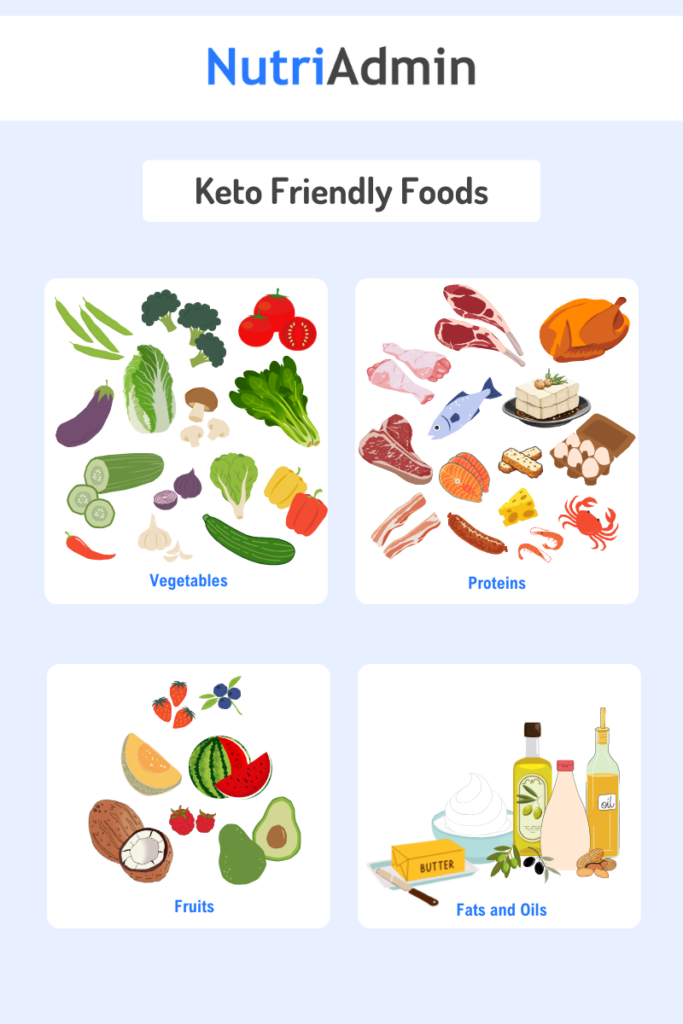
Understanding which foods align with a keto diet plan is crucial not just for achieving weight loss goals but also for maintaining a well-balanced and sustainable approach to nutrition.
Keto Diet Food List
| FOOD GROUPS | FOOD ITEMS |
|---|---|
| Vegetables | • Leafy greens – spinach, kale, swiss chard, lettuce (various types), arugula, bok choy • Cruciferous vegetables – broccoli, cauliflower, brussels sprouts, cabbage • Other vegetables – zucchini, asparagus, celery, cucumber, eggplant, mushrooms, green beans, garlic, peppers • Allowed in moderation – bell peppers, onions, tomatoes |
| Fruits | • Avocado • Strawberries • Raspberries • Blackberries • Blueberries • Coconut • Allowed in low quantities – cranberries, watermelon, cantaloupe, lemon and lime (for flavor) |
| Proteins | • Animal protein sources – eggs, meat, poultry, fish, seafood, processed meats (check for added sugars and carbs) • Plant based proteins – tofu, tempeh, edamame • Cheeses – cheddar, mozzarella, cream cheese • Allowed in moderation – unsweetened greek yogurt, cottage cheese |
| Fats and Oils | • Butter • Ghee • Plant and nut oils – avocado oil, olive oil, sesame oil, almond oil, walnut oil, sunflower oil • MCT oil (Medium Chain Triglycerides) • Lard • Tallow • Duck fat • Bacon fat • Fish oil (as a supplement) |
| Herbs and Spices | • Basil • Thyme • Rosemary • Oregano • Sage • Mint • Cilantro • Parsley • Dill • Chives • Tarragon • Bay leaves • Cinnamon • Nutmeg • Cloves • Ginger • Turmeric • Paprika • Chili powder • Cumin |
| Sauces | • Mayonnaise (low-carb option) • Hollandaise sauce • Alfredo sauce (cream-based) • Pesto sauce |
| Condiments | • Mustard (watch for added sugars) • Hot sauce (no added sugars) • Soy sauce or tamari • Worcestershire sauce (sugar-free version) |
| Salad Dressings | • Vinaigrette • Avocado-based dressing |
Choosing keto-friendly foods
While certain foods high in saturated fats, such as bacon, are permitted on the keto diet, it’s crucial to exercise moderation to prevent adverse effects. Remember, just because a food item aligns with keto guidelines doesn’t automatically make it a healthy choice. Be mindful of portion sizes and prioritize high-quality, nutrient-dense options to contribute to a more balanced and sustainable approach to the keto diet.
Sample Keto Meal Plan
NutriAdmin provides nutrition and fitness professionals different time-saving tools including a feature that allows users to create individualized meal plans in under 60 seconds. The meal plan generator can make meal plans based on different diets including variations of keto diet like keto vegan, keto vegetarian, and dairy-free keto.
Below is a 7-day sample keto meal plan that contains around 1,800 kcal per day:
Importance of Seeking Professional Guidance
Seeking professional health guidance while on a keto diet is crucial for ensuring a safe and effective weight loss journey. Nutrition and healthcare providers can offer personalized advice, tailoring the diet to individual needs and health conditions. Their expertise helps in navigating potential challenges like nutrient deficiencies and ensuring a well-rounded, sustainable approach.
Transitioning to a keto lifestyle requires ongoing support to monitor any adverse effects and make necessary adjustments. Regular consultations provide an opportunity to address concerns, receive guidance on maintaining nutritional balance, and ensure the diet aligns with overall health goals. In essence, seeking professional health advice actively contributes to a safer and more successful keto experience.
If you are a coach that works with the keto diet, you may benefit from using specialized software for coaches. Be sure to check out our best apps for coaches guide to help you find the app that works best for you.
Key Terms You Need to Know on Ketogenic Diet While Trying to Lose Weight
Ketosis
Ketosis is a natural metabolic state in which the body shifts its primary energy source from carbohydrates to fat. This occurs when you consume a low-carbohydrate diet, prompting the body to break down fats into molecules called ketones.
These ketones then become the main fuel for various bodily functions, including energy production. In simple terms, ketosis is like flipping a switch in your body, encouraging it to use stored fat as a key energy source instead of relying on carbohydrates.
Net Carbs vs. Total Carbs
Net carbohydrates refer to the total carbohydrates in a food item minus the dietary fiber and sugar alcohols it contains. This distinction is important in some low-carb diets, such as the ketogenic diet, where the focus is on managing net carbohydrate intake.
Total carbohydrates include all forms of carbs in a food, while net carbohydrates provide a more accurate measure of the carbs that significantly impact blood sugar levels. To calculate net carbs, subtract the grams of fiber and sugar alcohols from the total carbohydrates listed on a food label. This approach is useful for individuals monitoring their carb intake for dietary or health reasons.
Keto Flu
Keto flu refers to a set of symptoms that some people experience when they start the ketogenic diet. These symptoms, which can include fatigue, headaches, nausea, dizziness, irritability, and muscle soreness, often arise during the initial transition to a low-carbohydrate, high-fat diet.
The term “keto flu” is used because the symptoms can resemble those of the flu. It occurs as the body adjusts to using ketones—produced from fat breakdown—as its primary source of energy instead of carbohydrates. Staying hydrated, ensuring sufficient electrolyte intake, and gradually transitioning into the keto diet can help alleviate or prevent keto flu symptoms.
Ketones
Ketones are organic compounds produced by the liver as a result of the breakdown of fats. They serve as an alternative energy source for the body, particularly when carbohydrate intake is low. The production of ketones occurs during periods of fasting, prolonged exercise, or when following a low-carbohydrate, high-fat diet like the ketogenic diet.
Ketones are transported through the bloodstream and can be utilized by various tissues, including the brain and muscles, providing energy in the absence of sufficient glucose. The presence of ketones in the body is a key indicator of ketosis, a metabolic state often sought after in the ketogenic diet for its potential health and weight loss benefits.
Keto Breath
Keto breath refers to a distinctive, sometimes unpleasant odor that some people on a ketogenic diet may experience. It is often described as having a fruity or acetone-like smell. This phenomenon is linked to the increased production of ketones, specifically acetone, in the body during ketosis, a metabolic state where the body primarily burns fats for energy.
As the body adapts to using ketones for fuel, excess acetone may be expelled through breath and urine. While keto breath is generally harmless, it can be bothersome for some individuals. Staying well-hydrated and maintaining good oral hygiene practices may help alleviate or reduce the intensity of keto breath. Additionally, this temporary side effect often diminishes as the body fully adjusts to the ketogenic diet.
MCT Oil
MCT, or medium-chain triglyceride, oil is a type of dietary fat containing medium-length chains of fats called triglycerides. Unlike long-chain triglycerides (LCTs), found in most dietary fats, MCTs are more rapidly absorbed and metabolized by the body.
It is well-known in people who are on a keto diet plan because of its potential benefits. MCT oil is distinguished by its lower calorie content and rapid absorption, showing promise in diverse health aspects. Linked to potential benefits such as lower calorie intake, modest weight loss, and immediate energy provision, MCT oil plays a role in ketogenic diets. Despite mixed evidence on its impact on exercise and fat burning, studies suggest its potential in managing conditions like epilepsy, Alzheimer’s disease, and autism, emphasizing the need for cautious interpretation.
It has potential benefits, including possibly helping with weight management and providing a quick energy source. It may support modest weight loss and fat reduction, but its impact during exercise is unclear. Some studies suggest it could aid conditions like epilepsy, Alzheimer’s, and autism.
MCTs also have antimicrobial properties. However, evidence on blood sugar management is contradictory, highlighting the need for more research to fully understand its potential advantages. Overall, while MCT oil shows promise, further study is needed to confirm its various benefits.
Conclusion
The ketogenic diet has evolved over the years, gaining popularity as a weight loss plan and its various health benefits. Understanding the science behind the keto diet, including the focus on macros and achieving ketosis, is crucial for its effectiveness. While the diet offers potential advantages, such as weight loss and other health related benefits, it’s essential to be aware of common mistakes like inadequate water intake, neglecting protein, and choosing unhealthy fats.
Paying attention to hidden carbs, incorporating vegetables, and considering individual needs are vital for a balanced approach. Familiarity with key terms like ketosis, net carbs, and the keto flu enhances understanding and awareness on what is happening on your body while you are on keto diet.
It is also important to know the potential side effects of keto diet and learn ways how to prevent it. Ultimately, the keto diet provides a structured approach to nutrition, but individualization and mindfulness are crucial for long-term success.
When planning to start any diet, especially restrictive ones like the keto diet, consulting a nutrition or healthcare professional is the best approach.They’ll guide you based on your health and goals, helping you make informed choices for a safe and effective journey. Consulting professionals ensures you get personalized advice and can address any concerns along the way.
Finally, weight loss is about more than choosing the right diet and foods. You also need to strengthen your mind to develop more discipline. You can read more about the psychology of weight loss on our in-depth guide.
